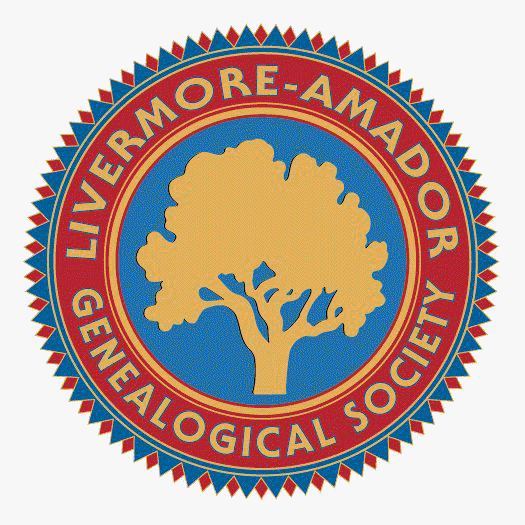
The Livermore Roots Tracer
Volume XXII Number 2
May 2002
Editors: Debbie Pizzato, Vicki Renz and Mildred Kirkwood
Web Editor: Mildred Kirkwood
 |
The Livermore Roots TracerVolume XXII Number 2 May 2002 Editors: Debbie Pizzato, Vicki Renz and Mildred Kirkwood Web Editor: Mildred Kirkwood |
The Roots Tracer is a quarterly publication with articles of interest to the genealogist. Members are encouraged to submit their "Profiles" and articles of general interest. Queries are free. The Roots Tracer is published in February, May, August and November. The deadline for each quarterly is the 15th of the previous month. Submissions must contain the name of the submitter, as well as the name of the author, publication and date of any published article that is being quoted. Send material to: The Roots Tracer, P. O. Box 901, Livermore, CA 94551-0901 or E-mail: rootstracer@l-ags.org
 |
Member News |
| Joan Detjens | Jane Bell | Linda Garrett |
| Anna Riesing | Suzanne Wade | Donna Krieg |
| John Stewart |
| Type | Memberships | Individuals |
| Individual | 126 | 126 |
| Family | 38 | 76 |
| Life | 7 | 9 |
| Benefactors | 3 | 4 |
| Honorary/Charter | 5 | 5 |
| Honorary | 2 | 2 |
| Total | 181 | 222 |
 |
Query - Clarence Wilbur Clarey |
Clarence Wilbur Clarey, born in Murray Township, Livermore, Alameda County, California in 1883, brings about the Great Mystery!
He was the son of Maria Harvey, daughter of John Harvey and Jane Crow. Locating the "Clarey" father has proven to be a very difficult task. Sometime after Clarence Wilbur's birth, his mother, Maria, married Walter Armstrong. Clarence Wilbur assumed the name of Armstrong but also used the Clarey name. The spelling of the Clarey surname has not been proven to be accurate. He married under the name of Clarey and his descendants also go by the Clarey surname.
The Harvey family came to Livermore between 1870 and 1880. John Harvey died in 1882 and was buried at "Boot Hill" and is now interred at the Roselawn Cemetery along with his wife, Jane Crow, and other family members.
It is also known that Clarence Wilbur Clarey witnessed a shooting at a livery stable in Livermore when he was about 9-12 years old.
Maria, husband Walter Armstrong and Clarence Wilbur Clarey died in Fresno, California. No significant clues have been found in Alameda or Fresno Counties for the elusive Clarey father.
Until the mysterious father of Clarence Wilbur Clarey is found, the research has reached a dead end. Any information would be greatly appreciated.
Contact is: Edwin Clarey
 |
President's MessageBy Dick Finn |
As I write this we are well into spring and L-AGS is in full bloom. There is not a week that goes by without a L-AGS meeting. I want to thank all those who take part in these meetings and especially those who organize and lead them. There are other things going on that some of you may not know about.
L-AGS is just about to wrap up the very large Schellens Papers indexing project under the leadership of David Abrahams and his great team of indexers, some twenty-five strong. Well done. The CD should be out soon.
On the heels of the Schellens project we are about to start the massive indexing of all of the Alameda County pre 1905 death records except for Oakland, which has been done. Over 25 of our members volunteered as indexers. Read about the pre 1905 indexing project in this newsletter and perhaps you will want to join us as an indexer.
We will take part in another project in October when L-AGS, in cooperation with the Livermore Library, will share a glass case at the library highlighting the Grapes of Wrath, the work of John Steinbeck and the movement of people from the Dust Bowl to California. If you have ideas on how we can best do that please give me a call.
 |
In Memoriam- Marjorie Pyle |
Our condolences to Ed Pyle on the death of his wife, Marjorie. Ed taught the adult education class from which we began, and is a current member.
Marjorie Butler Cummings Pyle, a 53 year resident of Livermore, died Thursday, April 4. She was 84. Born Nov. 17, 1917, she was a homemaker for 59 years. Memorial services were held at the Church of Jesus Christ of Latter-day Saints, Livermore. Burial was at Sunset View Cemetery in El Cerrito.
FROM: The Tri-Valley Herald
 |
Future ProgramsBy Dick Finn |
The L-AGS Program Committee continues planning our general meetings as a mix of "how to do genealogy" with programs featuring family and local history. So far this year we have had Tilli Calhoun speaking about her family coming from Arkansas on the Trail of Death, David Abrahams speaking on the large Schellens Genealogy Papers indexing project, Jackie Pels talking about her family in Alaska and how to publish your family history, and in April we had women from the Livermore Chapter of the DAR speaking to us on why go to the huge library in Salt Lake City, what to look for there, and how to prepare for that trip.
In May we will have Dr. Grace Devnich speak to us on what she has found as she researched the history of medical services in Livermore (you wouldn't believe how many hospitals were here and the duels that took place). Our June meeting will be a Sharing Your Finds and Tips meeting. This has been very popular with many interesting items. Please bring something of interest to share. In July we will have local architect Charles Huff speaking to us about the old time families of Pleasanton. What secrets will we learn?
Later in the year we look forward to Malvern Sweet, Jim Concannon, and Anita Gandolfo sharing memories of their families, all of whom played major roles in the history of the valley.
 |
Your Own Sutro Film |
If you wish to have a microfilm made for your personal use, contact Susan DeBoer, BMI Imaging Systems, 749 W. Stadium Lane, Sacramento CA 95834 or at 916-924-6666, ext 404; or fax 916- 928-0277; or <msdeboer@bmiimaging.com>. BMI is the firm Sutro allows to microfilm its material.
FROM: Gold Diggers, Tuolumne County Genealogical Society Newsletter, Vol.21, Issue 5, Feb/Mar 2002.
In the New York Narrows, early in the 20th Century, transatlantic steamers anchored at quarantine while inspectors and immigration officials boarded to survey the latest arrivals of human cargo. The great bulk of immigrating passengers - those in third and fourth class and steerage - were put on barges there or at receiving piers upstream, and ferried to Ellis Island, the national immigration station.
No name is more closely linked with massive American immigration than Ellis Island's. For three decades, - 1892-1924 - the greatest tide of incoming humanity in the nation's history swept through this narrow portal in Upper New York Bay.
From its opening in 1892 to its closing in 1954, more than 17 million newcomers arrived at Ellis Island. Today almost half of all living Americans can trace their heritage to one or more family members who first stepped onto American soil there.

Manual laborers, domestics, uprooted peasants, blacksmiths, displaced artisans and families trooped off the barges, up the quay and into the main building's ground-floor baggage room where they deposited their worldly belongings. They then climbed the flights of stairs to the Great Hall for medical and legal examinations.
| Left: Immigrant children on Ellis Island. Photo courtesy of National Park Service, Statue of Liberty National Monument |
The medical exam began as the immigrant mounted the stairs. Doctors at the top of the steps watched as they climbed. Was the immigrant breathing heavily? Was he limping? Did he have any type of a physical deformity that would keep him from finding a job?
The doctor then examined the immigrant, looking for any type of contagious disease. If suspected of having a medical problem, the immigrant was taken out of line and had his clothing marked with chalk: "L" for lameness "H" for suspected heart disease, or "E" for eye problems. The immigrant then entered the Great Hall and would remain until he could be taken upstairs for a full examination.
After his medical inspection, the immigrant sat on benches, working his way across the Great Hall to the legal inspectors.
Legal inspectors had the ships' manifest sheets - lists of all the passengers arriving on the steamships that day. The immigrant wore a manifest tag on his clothing with two numbers on it. The tag referenced the line on the manifest where the immigrant's name appeared.
Beside each name on the manifest were answers to questions the immigrant had presumably been asked before he was sold his steamship passage. The inspectors at Ellis Island would ask the immigrant the same questions approximately 30 in about two minutes. The questions were posed in English with translation as needed.
The questions included:
What is your name?
Where were you born?
Where are you coming from?
Where are you going?
Do you have a job waiting for you in the United States?
The inspectors also asked more strictly legal questions like:
Are you an anarchist?
Are you a polygamist?
Do you have a criminal record?
If the inspector suspected a problem, the immigrant, as with medical problems, was taken out of line; under legal conditions, his clothing was marked in chalk with an "SI." He was then detained until he could appear before the Board of Special Inquiry.
For 80 percent of immigrants, the average stay on Ellis Island was only three to five hours. Twenty percent were detained for medical or legal reasons, and between 1892 and 1924 only two percent - about 250,000 - of the millions processed were excluded from admission to the United States.
For those who were detained, their stay on the island was financed by the steamship company. The company was considered legally responsible for every immigrant until he or she was admitted to the United States. If an immigrant was excluded, the company was required to provide free passage to his port of origin. If the excluded immigrant was under the age of 12, the company provided passage for him and one parent to return.
The dining room at Ellis sold foods with which most immigrants would be familiar - thick soups, stews, fresh breads, milk and fruit. There was also a chapel in which to worship.
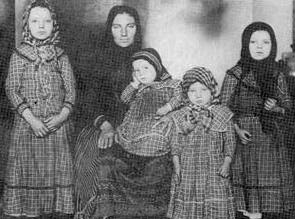
Most people were processed the day they arrived. Those required to stay longer were quartered in dormitories or in the island hospital.
Charitable agencies maintained offices on the island to assist newcomers or help them get in touch with relatives and friends on the mainland.
| Right: A Hungarian family on Ellis Island around 1910, photographed by Augustus Sherman, superintendent of the Island from 1897-1924. |
Landing cards were issued to those who passed muster. Ferries shuttled passengers the mile to Manhattan or the scant 300 yards to the New Jersey piers. Offices for exchanging currencies, purchasing railroad tickets and sending telegrams did business on the island.
Most contingencies were met, but in the babble of many different languages, communications often went awry. Once a group of 16 immigrants destined for Amsterdam Avenue, Manhattan, arrived in Amsterdam, an upstate New York community.
About one third of all immigrants admitted through Ellis settled in the New York City area. The remaining two thirds bought railroad tickets and awaited ferries that took them to New Jersey and on to major terminals where they caught trains to destinations throughout the United States.
Massive immigration ceased after 1924, but Ellis Island continued to serve as an immigration center though portions of the facilities were turned to other uses. The island was closed and vacated by the government in 1954 and turned over to the National Park Service in 1965.
In 1976 the island was opened to the public for tours from May through October. Today the historic station, a monument to the great tide of freedom - seeking masses, is home to the world - class Ellis Island Immigration Museum, which tells the inspiring story of 400 years of American immigration. The Statue of Liberty - Ellis Island Foundation, Inc. raised the funds for and oversaw the historic restoration and creation of the museum, working with its public partner the National Park Service. The museum's newest offering is the American Family Immigration History Center, which provides easy access to the immigration records of the 22 million people who entered through the Port of New York and Ellis Island between 1892-1924. Eleven fields of digitized information are available as well as access to 3.5 million original passenger manifest pages and over 800 pictures of passenger ships. The Center is also available online at
Photos courtesy of the National Park Service and Statue of Liberty National Monument. Used with permission. All rights reserved.
Editor's note Peg Zitko of the SL - EI Foundation, wrote and graciously updated this article. The foundation's work is funded by private donations from citizens, companies and organizations. If you would like to become a member of the foundation, write:
The Statue of Liberty - Ellis Island Foundation
P.O. Box ELLIS
New York, NY 10163
(Click on the thumbnail images to see the full-size images)
George and I first got interested in genealogy in 1973 when we inherited some little notebooks that my Danish grandparents had carried with them before they emigrated to America.

Hans Peter Hansen was a farm servant and Josephine Christine Marie Nielsen was a domestic servant. All servants had to purchase and carry with them a little book documenting their work history. When they changed jobs, the former employer had to write in an evaluation of their performance. They lived on the island of Als in Schleswig-Holstein, which was then part of the Prussian Empire, so the books were printed in German, with entries by the employers in Danish
The books were so intriguing that we quickly modified the plans for our trip to Europe - plans that had been long in the works - to include a visit to Denmark. As it turned out during that trip, each page of the little books held a poignant story.
Grandpa's book contains the entry by the Prussian official, "Special characteristics: Limps in the left foot." I had always thought he was injured on his job in the flour mill in Mankato, Minnesota, where we lived. But now I learned he had that injury before he left Denmark.
Grandma's book showed that she worked from 1880 to 1884 for Jacob Lauritzen in Brandsbølle. When we visited Als, we asked around until we found that house. A young man, Jørgen Jørgensen, a great-grandson of Jacob Lauritzen, is the current owner. He spoke perfect English and asked where we were from. We told him and he exclaimed, "Pleasanton? I was a farm exchange student there a few years ago! I was the first one in Pleasanton and I worked for the Moldt family." What a small world.
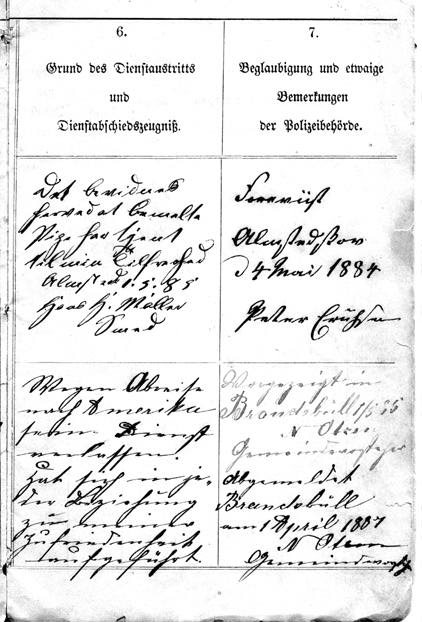
Then he showed us where Grandma's room had been in the house, and showed us a huge armoire that he said had been a wedding present to the couple she worked for. So she undoubtedly polished that very piece of furniture.
While we were in Als, we paid a visit to a cousin of George's co-worker at Sandia, the late Gunner Scholer. When we showed him Grandma's book, he said, "She worked for the blacksmith at Almsted! Did you know there is a song about him?" He went over to his piano bench, found the music book with that song in it and gave it to us. The words - in a Danish dialect that looks nothing like standard Danish - are rather earthy:

The roosters at Almsted sleep so much
That all the hens feel neglected
So the old smith hammers on his anvil
And now the roosters cannot sleep in peace.
Just think what we would have missed if my grandparents had not saved their work books and if we had not taken an interest in them!
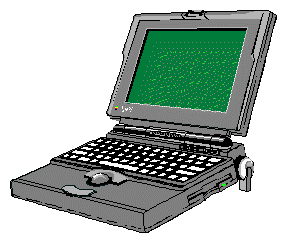 |
Computer Interest GroupBy Jim Lathrop |
The CIG meets once a month to hear speakers on genealogical computer related subjects such as software (new, revised, how to use it, etc.), hardware (computers, storage devices, scanners, cameras, printers), web sites, useful CDs, etc., that help us in our quest for genealogical information.
We have useful handouts and even a door prize now and then. Bring a friend.
During the school year we meet the fourth Thursday of the month except November and December at 7:30 p.m. at the Livermore Adult Education Building, 543 Sonoma Avenue, Livermore. See
Members needing help with a computer problem may call one of the mentors listed in the Member's handbook.
For information on CIG please call Jim Lathrop at 925-443-4640 or e-mail him at <lath1@ivwnet.com> or George Anderson at 925-846-4265 or
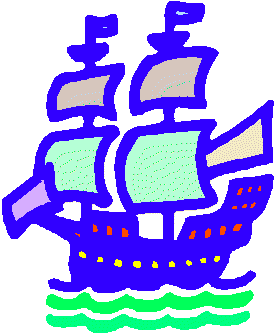 |
TMG Users GroupLarry Renslow & Kay Speaks, LeadersJoyce Siason, Coordinator |
The Master Genealogist (or TMG) is the complete family history project manager for Windows. Whether you are a weekend hobbyist or a professional researcher, TMG comes with everything you need to:
manage volumes of research data, photos, and sourcesThe Master Genealogist is limited only by your imagination. If you are disappointed with the limits of other family history software, then look at what TMG offers! Most data-entry fields are unlimited in length, so there is no need for awkward abbreviations. TMG supports an unlimited number of:
organize a research trip, including "To Do" lists, reference material, charts, and forms
track your correspondence and expenses
be the hit of a family reunion
or publish a book, complete with table of contents, footnotes, multiple indexes, and bibliography
freeform textTMG was designed by experienced genealogists who understand and prepare you for common research problems, including:
photographs
sources
citations
repositories
independent projects
people
events per person
names per person
relationships
user-defined events
user-defined flags
conflicting dataSpecial features not found in traditional genealogy software make it easy to:
uncertain dates
adoptions
unwed parents
"Old Style" dates
disproved data
contradictory sources
spelling changes
multiple lines of descent
extra-long place names
missing data
sensitive data
pursue theories
establish parent or child candidates
record any type of event (including LDS events)
record all of the evidence, not just your conclusions
integrate historical timelines
trace medical conditions
document witnesses and other non-primary roles
search for Soundex or true phonetic matches
search by married name or spelling changes
conduct Boolean (and/or) searches
The Tri-Valley TMG Users Group meets the third Saturday of each month, 9 a.m. to 12 noon, at 6377 Clark Avenue, Dublin, CA. The first hour or so is instruction and answering questions. The balance of the time can be spent in working on your own information or having further discussions. For directions refer to the L-AGS web site or call Joyce Siason at 925-829-1007 for information.
In the past few months, a story passed down from my grandfather to my father began to intrigue me.
The story was that my great-grandfather's second wife had been tried for espionage in the late 1920s or early 1930s.
I have begun a letter writing campaign to try and get dates and confirming data, such as newspaper articles or law documents. So far, I have not received any substantial information.

The story, however, was confirmed by an older cousin-in-law, who remembers hearing the tale and seeing clippings of Minneapolis Journal newspaper articles at her mother-in-law's home.
As the story goes, she was co-tried with an interesting international dark figure, notorious as an "FBI Agent gone bad." His name was Gaston Bullock Means.
| Left: Gaston Bullock Means |
My research on him has been more rewarding. He played a role in the Lindbergh Kidnapping case and had an up and down life, ending with his death in prison. He also wrote a book titled "The Strange Death of President Harding," published in 1930.

The Seven Daughters of Eve, by Bryan Sykes, 2001. 300 pages, hard cover, about $20. Available for checkout at Livermore and Pleasanton Libraries. Review by George Anderson.
Here is a book about genealogy and genetics that is actually entertaining, suspenseful and exciting in spots. At the same time it is an authoritative textbook about the coming revolution in genealogy - the use of DNA to test ancestral linkages. This is a subject that our own Doug Mumma has pioneered on this side of the Atlantic.
This is a book for laymen, written with humor and clarity by one of the world's leading authorities on the subject. Sykes is a professor at Cambridge who was the first to recover DNA from ancient bones, and who has been called in for such high-profile cases as the Ice Man from the Alps, the Cheddar Man from England, and the Romanov pretenders to the throne in Russia. His most important scientific achievement so far has been to prove to a disbelieving archeological establishment that 95 percent of Europeans are descended from seven "mitochondrial mothers," the Daughters of Eve of the title.
There are fascinating case histories. One is that of a young woman from Scotland who had proved her genealogy back for 200 years, yet showed up with unmistakable DNA from Polynesia. Someplace beyond her brick wall there must have been a South Sea Islander, perhaps a Tahitian princess, in her ancestry. Another case involves two men from a small island in Scotland. Both showed unusual patterns of mitochondrial DNA, similar but not identical, and quite different from most Europeans. Sykes was able to show that their common maternal ancestor had lived in Siberia tens of thousands of years ago. One line of descendants had migrated eastward over the Bering Straits land bridge to the Americas, down to Brazil, then to Portugal and then to Scotland. The other line had migrated westward to Scandinavia then, perhaps in a Viking boat, to Scotland. Mitochondrial DNA exists as a closed loop, and in this case, it circled the globe!
I'm sure you will enjoy this book, and in the process, will prepare yourself for the exciting new world of genetic genealogy.
Essay ContestBy Cath Trimble |
California's long history includes a unique and rich blend of cultures and nationalities. The Federation of Genealogical Societies/California State Genealogical Alliance conference in August 2002 will highlight and recognize this distinction. To identify the wealth of personal family stories, the FGS/CSGA planning committee announces the California: Goldmine of Diversity Family History Essay Contest. You are invited to share a personal account of why your ethnic or national background matters to you as an individual. You can demonstrate pride in your family history and receive acknowledgment of your literary efforts. Submissions will be judged by nationally recognized genealogists.
1st Prize - Free registration to the FGS/CSGA conference in Ontario, CA (Registration will be reimbursed).
2nd prize - $50 registration reimbursement.
3rd prize - $25 registration reimbursement.
Winners may substitute a one year CSGA membership or a one year Forum subscription if they are unable to attend the conference. All winning entries and as many submissions as possible may be printed in the CSGA Newsletter over the next year.
Submit entries to: Nancy M. Huebotter, FGS/CSGA Essay Contest Coordinator, e-mail: nmhuebotter@earthlink.net or by U.S. Mail: 2634 Associated Road, Apt. #A110, Fullerton, CA 92835.
 |
Library NewsBy Judy Person |
The first item of library news is that our esteemed colleague, Jay Gilson, has resigned as chair of the Library Committee. He took responsibility for ordering the large quantity of CDs for the last several years, and kept the CD lists up-to-date, as well as instituting the program of 50-50 purchases with members for their special interests.
We thank Jay for his great contributions to our Society and its Library. I hope our next CD buyer will step up right away. You'll get lots of help from others, as well as becoming familiar with the new items coming out.
In looking at recent postings to the Genealogy Librarians forum, a number of states and big libraries are announcing the arrival of the 1930 census, as well as their discoveries of how to find people in that census. Genealogists may want to take this route, asking if a particular library can have a researcher find their families for them, for a reasonable fee.
We have added some new books to our collection, despite the fact that more items are now being produced on CD, and more cheaply, than on paper. They are:
San Francisco IOOF Crematory Records. From the late 19th and early 20th Centuries. We'll hope these help us with non-local queries, too.
The Portuguese Making of America. The contributions made by our many Portuguese forebears. Good for people to relate to their children and grandchildren, too
Discovering Your Jewish Ancestors. Long-awaited new book.
Locating Union and Confederate Civil War Records, by a Vacaville author. Since a national publisher has offered it, it has been found to be of widespread interest.
Branch to Branch: A manual for teaching genealogy. By Annette Perry, who wrote the Genealogy for Librarians page in Heritage Quest, chairs the California Library Association roundtable on genealogy, critiqued our collection and taught a class at Pleasanton Library a number of years ago. Down-to-earth information to help us share our wealth of knowledge with others.
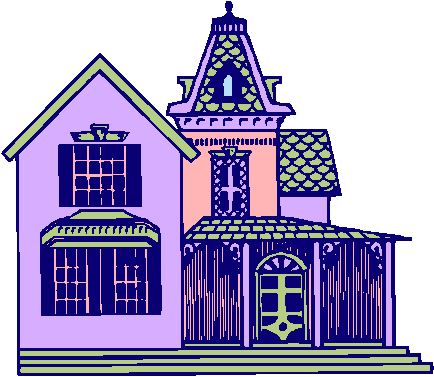 |
Peel MansionBy Linda Garrett |
My husband and I decided to take 3 weeks and drive his parents to visit relatives in Oklahoma and Louisiana in May. So we thought we could try to get in a side trip for ourselves.
My husband suggested I look into a mansion that I have a picture of hanging in our living room. Several years ago I bought this picture at the antique store on Main Street in Pleasanton. I was so drawn to it at the time and there were papers tucked in the back telling more about it and the artist.
The name of the picture is "Old Lady in Lavender Lace." It was done in the late 1970s by an artist living in Tulsa, OK at the time, but who had grown up in the area of Bentonville, AR where this mansion had been built in 1875. It had been abandoned, but still had wisteria growing up the front, hence the title of a Lady in Lavender Lace. The man who built the mansion was named Samuel W. Peel.
When I got the information down a couple of days ago, I had forgotten who had built it, just that it was in Arkansas and the story that he built it after the Civil War for his bride. Just this past January, I was on a research trip to Salt Lake City and while looking into one of my husband's lines in Arkansas, found a gold mine of information on a Hotchkiss family. His gg-grandfather, Jonathan Hotchkiss had married Louisa Maranda Peel.
Well, the light bulb went on over my head and I wondered if there might be a connection. I did some research online and I'm positive there is. My guess is the man who built the Peel Mansion in Bentonville was a second cousin of Louisa Maranda Peel.
I got on the Internet and to my delight, I found the mansion has been restored and is now a museum. The land was purchased and donated by Wal-Mart. I sent an e-mail to the director and she has answered hoping I will get to visit and she is giving my e-mail to Col. Peel's gg-granddaughter, who works in their library!
If you are interested in seeing the website, go to: Peel Mansion
We also hope to visit the Pea Ridge National Park. As it turns out, my husband's mother had two great-uncles who fought in that battle.
 |
Pre-1905 Indexing ProjectBy Dick Finn |
The Pre-1905 California Death Indexing Project was started in San Diego County just over three months ago and has really grown. Now there are over fifteen county indexes on Roots Web, more than a dozen counties are being transcribed, and many other county records are on order. The project has grown so fast and has received so much support that volunteers in some counties have started to index the birth and marriage records. When finished this will be a great aid to those looking for pre-1905 records (it was about 1905 that the state took over control of records - before that it was up to each county).
In Alameda County only Oakland has been indexed so far. At our last L-AGS board meeting we voted to fund and index the remainder of Alameda County. We have ordered the paper copies that we will work from - so we can do the indexing at home at our own speed. Once the paper copies are here we will index the death records, using a template supplied to us. The data will then be sent to San Diego by e-mail where it will be uploaded into Roots Web for all genealogists to use free of charge. For our efforts we will not only be able to see and search the files on Roots Web but will also receive a CD for our use. For more information, please see the web site at
If you would like to take part in this very interesting and very worthwhile project please send me your name, address, phone number, and e-mail address. If you know of someone who might not have e-mail but would like to help with this project please pass this information on to them.
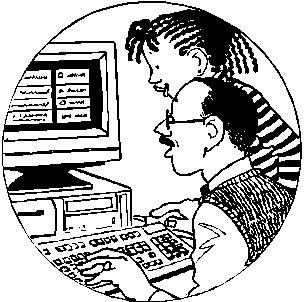 |
Family Tree Maker |
The L-AGS Family Tree Maker (FTM) Focus Group meets the first Thursday of the month at 7:30 at the Livermore Adult Education Facility (during the school year), 543 Sonoma Avenue, Livermore. For a map to the school, see
We are primarily a group of FTM users (from beginners - even those who have not yet installed FTM - to experts) who discuss problems and solutions, share successes, answer questions, and in general help each other with the Family Tree Maker software. At recent meetings we have talked about using shortcuts in FTM to input data, generating charts that show specific information and generations, showing some of the work we have done using FTM including producing our own low cost family history books, and the pros and cons of the newest version of FTM.
All persons interested or potentially interested in Family Tree Maker are invited to attend. For information on our group please call Dick Finn at 925-447-9652 or e-mail him at rwfinn@pacbell.net or George Anderson at 925-846-4265 or gwajr-at-comcast.net. Contact Dick or George for information about topics to be discussed. Visitors are welcome and there is no charge to attend.
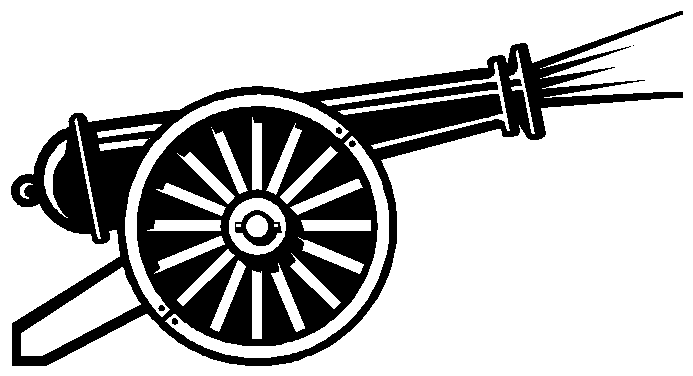 |
War of 1812 Site |
If you have ancestors who were engaged in this devastating war, you already know there is very little information available on them as compared with the Revolutionary War or the Civil War. This web site is loaded with links to articles, photographs, music, a video, a bibliography and other information.
All about the War of 1812
FROM: Gold Diggers, Tuolumne County Genealogical Society Newsletter, Vol.21, Issue 5, Feb/Mar 2002.
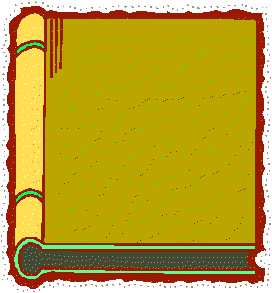 |
Livermore Valley HistoryBy Gary Drummond |
Editor's Note: Gary Drummond has long been a student of Livermore Valley History. He is the author and editor of several publications on valley history, including the stories of Mary Ann Harlan Smith, William Mendenhall and James D. Smith, Headmaster of Livermore College from 1875 to 1893. He is on the Board of Directors of the Livermore Heritage Guild.
The citizens of Livermore were generally isolated from the events taking place in Western Europe during World War I. The people generously gave to Belgian relief in the early days of the conflict. The Women's Improvement Club encouraged the townspeople to contribute a 50-pound bag of flour or an equivalent supply of beans and other household essentials to starving Belgians. The contributions were turned over to the Red Cross for shipment overseas.
But by 1917, when America entered the war, a local hysteria was developing. The Herald warned against "whispering propaganda." It went on to say, "Whenever you hear a rumor of a disaster suppressed by the government, or an attack on the physical and moral welfare of American troops, you can rest assured that it originated in the evil mind of a paid German agent."
Anti-German feelings in 1917 and 1918 may appear to be somewhat heavy-handed, as when the State Board of Education barred the teaching of the German language in all high schools in California. It also eliminated all books printed in German from the list of approved school texts.
Even on the local level there were strongly held anti-German sentiments. The Livermore Board of Trustees approved an ordinance in May 1918 "prohibiting the utterance or use of seditious language, or of words tending to disturb the peace." Violation was a misdemeanor and upon conviction the guilty party was subject to a fine of $500.00 and six months in durance vile (long imprisonment).
The record shows that the ordinance was violated at least once.
The culprit was Manuel Silva, a sheepherder and farm laborer, who had lived in the Valley for 40 years. The offense took place in the Rex saloon located in the Schenone Building on First Street. As Silva was leaning up against the bar, he "expressed the wish that Germany would win the war, applied an opprobrious epithet to President Wilson and renounced the Red Cross in terms that are unprintable."
The barroom gang was about to clean Silva's plow, but the saloonkeeper took charge of the situation and hustled Silva off to the local Justice of the Peace. Following a hearing, Silva was placed under arrest and remanded to the county jail for ninety days. The Judge "denounced the prisoner in scathing terms for his disloyalty, and expressed his regret that he could not make the penalty imprisonment for life." He also warned him to keep away from Livermore "as his presence in this community will not be tolerated."
 |
The California Newspaper Project |
The California Newspaper Project is part of the U.S. Newspaper Project. They want to microfilm all newspapers printed in California, to preserve the history of the State. They have received $3,300,000 to complete the project. They have identified 11,0000 newspapers that they want to microfilm, but have located only 8,000 of them. Of these, all or part of 5,000 are already microfilmed.
The website, http://www.cbsr.ucr.edu/cnp, tells all about the project and is searchable. It will tell you where you can find the microfilm copies of the newspapers you want to search.
 |
Life in the Past LaneBy Jon Bryan |
Livermore Herald newspaper article from April 21, 1906
One of the greatest calamities of modern times has befallen our State. The destruction of life and property from Wednesday's earthquake in the central portion of the State is simply appalling. San Francisco, Santa Rosa, Hollister and Ukiah are masses of ruins and the magnificent buildings of Stanford University are razed to the ground. Every town in the bay section suffered severely. Our own town escaped with comparatively little damage for which we should be profoundly grateful as we hear of and witness the devastation elsewhere. All ordinary means of communication with the stricken cities have failed and as even the newspaper plants are destroyed all accounts of the catastrophe must be gained from refugees from the stricken cities. All the cities are under martial law and no one is allowed to enter unless it is to aid in the work of salvage but in order to relieve the awful situation in the doomed metropolis people were allowed to leave as they please. The situation is so appalling that it beggars description and the stoutest heart quails at the task of attempting it while the most graphic pen would fail entirely in describing the horrors that come to us piecemeal from the mouths of the frenzied people who have escaped from the inferno.
It will be many days before the awful story of the great disaster that has befallen San Francisco can be fully told, for all is confusion, fire has licked up what was left by the earthquake in the business section of the city, and the end of the calamity is not in sight.
The earthquake shock which came unheralded at 5:15 on Wednesday morning was a terrific one and wrecked hundreds of buildings, some of the latest and most improved types of architecture which were supposed to be earthquake as well as fire-proof. The collapsing interior of the falling fronts, firewalls and cornices caused the death of hundreds of people. It is impossible at this writing to even approximate the number and the full roster of the dead may not be made up for weeks. As if this calamity were not enough, a greater one came to harass the stricken city. When the great shock had spent its force, fire broke out in all sections of the city, many of the conflagrations starting from electric wires from which the currents had not been shut off and in many other instances homes were burned by the neglect of housekeepers to look out for their chimneys.
Dozens of fires thus started raged unchecked on account of lack of water until the conflagration became a general holocaust. Block after block went down as the flames fanned by a strong wind formed a solid sheet which swept everything before it.
Box after box of dynamite was ineffectually used to stay the ravages of the flames while scores of stately buildings were licked up by the great tongues of fire. Helpless to stem the conflagration the firemen directed their attention to aiding thousands of families that were rendered homeless. No sooner were private residences and apartments and lodging-houses vacated than they were mowed down before the oncoming conflagration. In many instances narrow escapes were reported of persons who rushed back into buildings in an attempt to secure additional belongings. Before they could leave the structures they often found themselves surrounded with fire.
From the reports brought out by refugees all the great public buildings and skyscrapers were either reduced to ruins by the earthquake or later fell victims to the fire. Newspaper row, including the world-famous Spreckles building, which seemed to defy the very elements is laid low as are the Merchants' Exchange, Palace, Grand and St. Francis Hotels, Crocker, Hobart, Callaghan, Flood and scores of other buildings equally prominent as landmarks and most of which were regarded as absolutely fire-proof.
Not satisfied with reducing the entire business district to a heap of tangled steel frames and piles of powdered stone and melted brick, the fire fiend invaded the residence section sweeping all before him. The residents hurriedly gathered together their most precious possessions and hastened to places of safety but in many places had to abandon everything to save their lives, so rapidly did the flames travel. One fire raged on the south side of Market Street and another on the north. At this writing (Friday afternoon) the fires are under control. On Wednesday and Thursday nights the glare of the great conflagration could be plainly seen from Livermore over a mountain range and nearly fifty miles distant.
The city is under martial law. The regular troops were worn out by Thursday night and were replaced by the National Guard. Company 1 of this place went down by special train and is now engaged with other companies of the Second Brigade in patrolling San Francisco.
At Tesla a large water tank collapsed and the contents rushed down the shaft to the 800 foot level overwhelming the pumping station and nearly drowning the pump tender, Harry Otter, who was compelled to climb up the shaft as the cage was wrecked. The ground under one end of one of the large bunkhouses sunk several inches snapping the heavy timbers apart. One of the huge brick smoke stacks at the pottery was cracked and half of it fell through the roof destroying a large amount of sewer pipe.
Pleasanton suffered considerably more than Livermore, in cracked buildings, fallen chimneys, etc., and the destruction increased the nearer the approach to the peninsula on both the north and south sides of the bay where the force of the shock was concentrated.
Livermore escaped with less damage than any other locality in the zone of the earthquake's activity. The only reason that can be assigned for our immunity is our elevation above sea level, which is considerably greater than any other place.
[For more information and photos from the Internet see The Museum of the City of San Francisco at 1906.]
From the Livermore Herald we read more about the earthquake on April 28, 1906
All the former Livermore people who were in the city at the time of the catastrophe have been accounted for with one exception, Miss Violet Gilham, who was residing in a house on Sixth Street which collapsed. Nothing has yet been heard of her but it is hoped that she is in one of the concentration camps. A number of those who are comfortably situated remained in the city but about 400 former residents are again sojourning in the community and some will remain for several months. Very few of these are in distress or need assistance of any kind but there are about fifty persons in the town who will require aid from the relief committee for some time to come. A number of others who have passed through town have been given beds and meals or provisions.
[I have tried to locate Violet Gilham's name in some available sources but have been unsuccessful. Please help me find her. It is entirely possible that she later married and is buried under her married name. So far, I did not find her name in some lists of 1906 earthquake deaths!]
 |
Study GroupKay Speaks and Joyce Siason, Leaders |
The L-AGS Study Group is an informal meeting for family genealogist researchers. We represent those who have spent many decades learning methods and techniques...to those of us who are "newbies," just beginning our journey through the archives and old documents. We share the joys, and yes, frustrations of this wonderful lifelong hobby. One of the many things we have in common is the willingness to share and help others.
Do you sometimes feel as if you are "running in place" in your genealogical research? Do you feel like you sometimes need that extra "boost" - like you are so close to finding that one special fact that will tie your ancestors together? Hit a brick wall - and feel you are at your wits end?
Well, you are amongst friends. All of us feel these same emotions during our family research - frustration, joy, hopefulness, as if you are standing in the lowest valley and then as though you could shout from the highest peak with joy. At times like these it's always nice to be able to share your challenges and victories with fellow enthusiasts - other family historians and genealogists.
Do you have a specific item of discussion you would like on the agenda? Want help in deciphering some new information you have just found? Want to share a recent victory? Please let us know.
We meet on the third Thursday of every month at the LDS Church, 950 Mocho Street, Livermore, CA at 7:30 p.m.
 |
Things to FileBy Lois Barber |
National Archives II
In addition to the National Archives in Washington, DC, there is the National Archives II, in College Park, MD. There is a shuttle bus from the main archives in Washington, DC.
The National Archives II has floors devoted to maps, photographs and military information. They have World War I Army burial files, with information about the soldiers killed in action, their families and their burial sites. There are specialists who will meet with you and pull the files you need. They only allow you to have one item at a time, and items to be photocopied must be reviewed by the staff. They are very serious about security, so be prepared to spend some time here, learning the process as well as finding the material you need.
From: An article by Barbara Corff in ZichronNote, Journal of the San Francisco Bay Area Jewish Genealogical Society, Vol. XXII, No. 1, February 2002.
Scottish Names
It was not until 1800 that Scottish women started to change their names upon marriage. Even today in Scotland, a married woman is legally known as "Mrs. Jane MacDonald (her maiden name) or Grant." It is still a practice in Scotland for a man, on marriage to an heiress, to change his name to his wife's name - thus keeping the name on the land.
From: The Family Tree newsletter from the Ellen Payne Odom Genealogy Library, Vol. XII, No. 1, February/March 2002
"Quaker" Dates
If you are interested in the way Quakers dated events check out Our Quaker Ancestors: Finding them in Quaker Records by Ellen Thomas Berry & David Allen Berry, Chapter VII - "Quaker Records and Some Possible Problems," pages 67 and 68.
Naming Patterns in England, 1700-1875
1st son - father's father
2nd son - mothers father
3rd son - father
4th son - father's eldest brother
1st daughter - mother's mother
2nd daughter - father's mother
3rd daughter - mother
4th daughter - mother's eldest sister
Younger children would be named after earlier ancestors, but the pattern in their case was more varied.
One variation from the above was for the eldest son to be named after the mother's father and the eldest daughter after the father's mother. In this case the second son would be named after the father's father and the second daughter after the mother's mother. Occasionally the second son and daughter would be named after the father and mother instead of the third son and daughter. Another variation was to name the third daughter after one of the great-grandmothers instead of after the mother. In such a case, the fourth daughter would usually be named after the mother.
From The USGenWeb Project.
PC Magazine Reviews
If you are planning the purchase of some new gadgets, take a look at the PC Magazine web site, http://www.pcmag.com/category/0,2999,s=1473,00.asp. I frequently purchase a copy of PC Magazine, but from now on I'll check out this site for information before making a purchase.
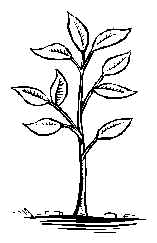 |
G.R.O.W.Genealogy Resources On the Web - The Page That Helps Genealogy Grow!Compiled by Frank Geasa |
A site dedicated to the history of America's Orphan Trains, it has many orphan arrival lists and much interesting information on a little known but long running aspect (1853-1930) of American history. http://www.orphantrainriders.com/
The Australian Women's History site has many useful links to sites with search lists, such as one for Army nurses and for Famine orphans from Cork. http://www.members.optushome.com/au/lenorefrost/women.html
Were you aware that the Mormon Family Search site contains worksheets for U.S., Canadian and UK census? These and various other worksheets can be printed from this site. Use the popup print button. http://www.familysearch.org/Eng/Search/rg/research/type/Form.asp
The Archdiocese of Milwaukee has an online search capability for the Catholic cemeteries of that diocese. The site is updated regularly. http://cemeteries.org/genealogy/genealogy01.asp
If you are doing German research, particularly in the areas of Schleswig-Holstein, Mecklenburg or Wurttemberg, an excellent site by Gary T. Horlacher provides many very useful resources to assist you. http://www.horlacher.org/germany/
An online index of the immigration records for Japanese entering the U.S. from 1887-1924 can be found at the Brigham Young University site. Many also have digital images of the documentation available. http://abish.byui.edu/specialCollections/fhc/Japan/index.asp
This unusual and growing site now contains the names of about 10,000 indentured servants who left Bristol for the new world. Besides the expected data it also gives the persons parent's name, their village and their destination. http://jefferson.village.virginia.edu/vcdh/jamestown/bristol.search.html
Search the city directories for Trenton, New Jersey online. They are available for 1859, 1877 (partial), 1881, 1900, and 1920 at http://oldmillhillsociety.org/research/directories. htm .
If your ancestors include Quakers you might want to visit this and related sites with marriages and deaths transcribed from the Friends' Intelligencer and Journal circa mid to late 1800s: http://www. geocities.com/averys2002/quakerdth.htm .
This Illinois history and genealogy site is organized by county. Depending on county you will find many different and some unusual lists transcribed such as list of late paying taxpayers. http://www.iltrails.org/
Hopefully you will not find your ancestors at this unusual site but it does make interesting reading. The 14,490 executions from 1608-1977 in the U.S. and territories are listed. http://users.bestweb.net/~rg/execution.htm For very interesting reading visit its link to the site http://www.convictcentral.com/index.html
The Ohio Historical Society has an online index of Deaths in the state for the period 1913-1937 at http://www.ohiohistory.org/dindex/
If your research includes the Channel Island of Jersey, you will want to visit this site with many occupational lists. http://user.itl.net/~picus/names/index.htm
This site for Fremont County, Iowa has a genealogy database of over 16,000 names from more than 5,000 families in that general locale. http://www.kate-morgan.com/
Do you have a reference to a county in a state but cannot find that county anywhere on the map? You might want to try this site, which lists the counties that have faded into history, organized by state. http://barusa.tripod.com/ghostcounties/
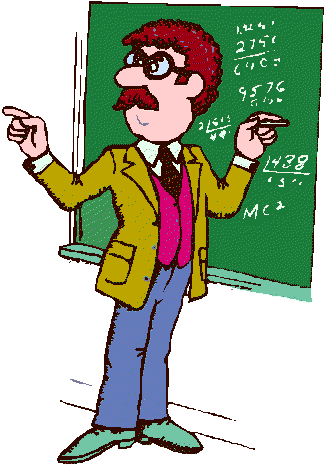 |
Upcoming Seminars and WorkshopsBy Marie Ross |
May 15-18, Milwaukee, WI - The National Genealogical Society presents its annual Conference in the States. For information, check their web site http://www.ngsgenealogy.org
May 19. Marin County GS - Meeting, schedule: Annual picnic. Details will be announced later. For information, e-mail queries@maringensoc.org.
May 25-June 1 Alaska cruise - The California Genealogical Society and the All Cruise Travel are offering an eight - day cruise to Alaska for people who are interested in learning more about tracking family ancestry. Cruise to Alaska on the Star Princess boarding in Vancouver, B.C., Visit Ketchikan, Juneau, Skagway, Glacier Bay and College Fjord, ending in Seward. Contact All Cruise Travel, 1213 Lincoln Avenue, #205, San Jose, CA 95125 or 800-227-8473 or http://www.allcruise.com/
August 7-10, Ontario, CA - Federation of Genealogical Societies Annual Conference. Ontario Convention Center, Ontario, CA. Information on their web site at http://www.fgs.org/
Sept. 21-27 Dublin, Ireland - NGS Research Trip to Dublin, Ireland. Research at the National Library, National Archives, General Register Office and Valuation Office, as well as an enjoyable and informative countryside excursion. For details and registration information, visit the NGS website: http://www.ngsgenealogy.org/ or e-mail: ngs@ngsgenealogy.org .
Oct. 27-Nov. 2 - London Research trip sponsored by the NGS with the KEW Public Record Office, space limited, contact Humphrey@ngsgenealogy.org or call 703-525-0050.
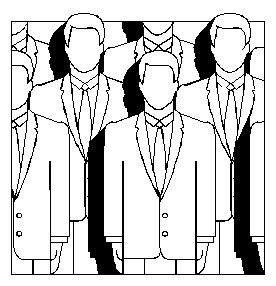 |
1930 Census Film LocatorBy Claire Kluskens,National Archives and Records Administration Washington, D.C. |
I am pleased to say that NARA's 1930 Census Microfilm Locator (1930 CML) is now online at: http://1930census.archives.gov.
This will enable you to do geographic searches to determine in which enumeration district(s) a particular locale will be found before you even put a roll of microfilm on a microfilm reader.
I personally spent a good portion of six years of my life, from March 1995 to March 2001 (along with the assistance of volunteers and a few staff members) compiling, editing, typing, and proofreading the data for this product, and I hope people will find it useful.
The geographic data is an edited version of the 1930 portion of T1224. Since some of you will want to know how this varies from T1224, here are the three basic "edits":
Good luck to you with the 1930 census.
 |
Newsletter Staff |
Editors
Mildred KirkwoodProofreading George AndersonPrinting & Distribution Eileen Redman |
Staff Contributors
|
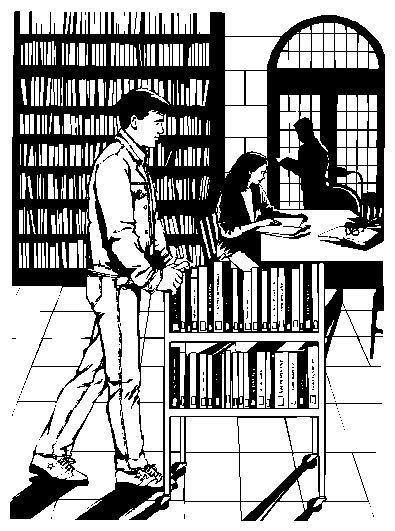 |
Donations to L-AGS |
Some of our members have wished to donate books or other items to our group. We will be happy to receive such donations. The donor will receive a Thank You note to use for tax purposes, if desired.
Other members have wished to make a monetary donation on behalf of a loved one or friend. These donations will be used according to the donor's wishes, or if none is expressed, we will purchase items for our Pleasanton and Family History Libraries.
We welcome such donations and our Corresponding Secretary will acknowledge the gift. If a memorial, an acknowledgment will be sent to the family.
Last Modified 10may04.0547 gwa